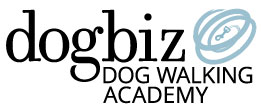dogbiz Dog Walking Academy
5 Tips for Better Dog Walking Meet & Greets
Client meet & greets are a challenge. You need to learn everything there is to know about a dog you’re considering walking, both to make a good choice and to keep her (and everyone else) safe if you take her on.
But it can be hard to get solid, reliable information during an intake interview. Potential clients are motivated to get you to say yes to their dog, are likely to have gaps in their understanding of dog behavior, and may also feel anxious about being judged on their dog’s poor recall or occasional reactive outbursts.
Your ability to listen to a potential client—to hear what they say, what they don’t say, and what they’re actually communicating with both—is critical.
Good listening is all about asking the right questions in just the right way. Here are 5 tips for getting better information from your meet & greets:
Tip 1: Put the client at ease
Start the interview by explaining why you’re going to be asking so many questions:
“Thank you for making the time to meet with me. As I explained on the phone, I have a lot of questions to ask you about Charley. Because it’s my job to keep Charley safe and make sure he has a great time with me, I want to know everything about him—the good, the bad, the quirky, what he loves, what he hates, what makes him tick.” If you’re a group walker, you also want to know all about Charley so you can choose the best group mates for him.
This explanation takes a bit of the anxiety out of the equation for the client—you’re asking questions not to judge them or Charley, but so you can take good care of him. You’re also telegraphing that you don’t expect the dog to be perfect, and that it’s okay to share the less charming bits.
Tip 2: Use lay language
You need to know if the dog is a resource guarder. But the client may not know that term, and it sounds serious and negative. If you ask, “Does Charley resource guard from other dogs?” most clients instinctively feel there’s a right answer (“No”) and a wrong one (“Yes”). This increases the chances of a less forthcoming answer.
Instead, you might ask, “What does Charley do when other dogs try to share one of his favorite toys?” Everyone understands what sharing means, and the childhood-steeped language carries less judgment.
Tip 3: Avoid yes or no questions
As shown in the last example, yes/no questions too often imply a “right” answer, creating discomfort and encouraging hedging. Most behavior is not black or white, either, and yes/no questions don’t leave room for the grey maybe situations in between.
Tip 4: Ask description questions
Instead, ask descriptive questions to gather narrative answers. The best narrative answers tell you what a dog does in specific situations. Asking, “Does your dog like meeting other dogs?” gives you the client’s interpretation. While often interesting, this answer isn’t likely to be useful and reliable, given the average lay person’s limited understanding of dog behavior.
What you need to know isn’t whether the client thinks her dog likes meeting other dogs. You need to know what the dog is likely to do when you encounter an unknown dog. So instead of asking, “Does Charley like meeting other dogs?” try “When you’re out walking on leash, what does Charley do when he meets a new dog?”
The “what does your dog do when…” construction encourages potential clients to describe what they’ve seen, rather than telling you their belief about what the dog’s behavior means. If a client gives you an interpretive answer, such as “He gets really happy,” follow up with a question that forces description: “What does he do that shows you he’s happy?” or “Describe what he does to show he’s happy about meeting the new dog.”
This approach to asking questions—one that allows you to really listen through your clients’ eyes—will provide much more useful and reliable information during your intake interviews.
Tip 5: Ask exception questions
A dog may be happy to meet dogs in general, or he may love people, but if there’s an exception, you should know about it.
Clients often fail to mention the exception, either out of embarrassment, worry, or sheer forgetfulness. So always follow up your “What does he do when…” questions with an exception question. For example, “Are there any dogs or types of dogs that Charley doesn’t feel as comfortable with or isn’t as happy to say hello to?” Or “Does he respond the same way to children, or does he prefer adults?”
Your exception questions will ferret out the situations you’ll need to be watchful for if you choose to walk the dog.
Listening through asking
Gaining detailed, accurate behavior information from potential clients is all about careful listening. That requires good information to listen to, which requires skillful interviewing.
Take time to craft your meet & greet questions to put clients at ease, encourage description, and draw out important exceptions. You’ll get much better information for your screening decisions, learning what you need to know to keep everyone—yourself and your business, the dogs in your care, and everyone you encounter on your walks—safe and happy.

Enjoy a free subscription to Two Feet Forward, the definitive e-newsletter for the modern dog walker
- Dog walking business tips
- Dog behavior tips
- Career development opportunities
- Industry discounts

Ready to take your dog walking business or career to the next level?
Become a certified professional dog walker through the premier dog walking school.
Learn about the Dog Walking Academy >>


